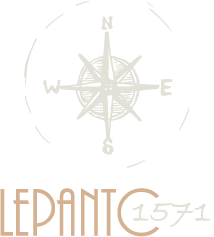Ancient Chalkis (Chalkia, Chalkeia, Ypochalkida) is located on the hill of Agia Triada, to the east of the village of Kato Vasiliki next to the sea. It was built at a strategic location controlling the maritime communication at the entrance of the Corinthian Gulf. Close to fertile soils the important factor for its foundation was its safe location from the inland side. The sole path towards the town is located through the side of the current Gavrolimni.
Ancient Chalkis is known from the List of Ships in the Iliad while historical references to the city are mainly extracted from Thucydides and Strabo. Although no epigraphic findings survived from antiquity, its identification with the remains of the hill of Agia Triada is almost certain according to the historical references as well as archaeological data. Furthermore, Thucydides refers to Chalcis as Polis while according to archaeological research its seaport could be located close to the river Evinos. Thucydides mentions that during the second year of the Peloponnesian War admiral Phormion set sail of the port of Aetolian Chalkis in order to face the fleet of the allied Corinth and Sparta. As Polybius informs the port was in use until the end of the 3rd century. B.C. Moreover, Strabo in the 1st century A.D. seems hesitant about the exact location of Ypochalkis. It is therefore possible that in Strabo’s times the port and city of Chalkida were out of use. Finally in terms of archaeological perspective it is worth noting that interesting enough seems the submerged landfall formation to the south and east of the city.

Archaeological Remains
Visible remains of the ancient settlement are few and far between. Architectural material from the ancient wall has been used as spolia (in second use) in the Byzantine walls and for the construction of the local Early Christian basilica. Just a fragment (sima) of the ancient temple remains, which probably is dated in the Early Classical period. Archaeological research at the top of the hill revealed the existence of a number of sanctuaries dating from the 6th century B.C. onwards. Moreover, on the SE hillside excavators came across the foundations of Hellenistic houses and collected significant Hellenistic pottery and several coins showing the trade relations and contacts with many cities of the ancient world. On the east side of the hill ruins of a settlement were found dating from the Archaic to Classical period. In the same area and towards lower stratigraphy, geometric pottery of the 8th century BC was found, while at the lowest strata and onto the natural rock excavators found human activity remains dated in the Helladic I and II period (3rd millennium BC), one of which was associated with hestia (the hearth). Well-preserved housing foundations dated in the Archaic (late 8th/ early 7th to 6th century BC.) were revealed between the western foot of the hill and the lowland. The collected pottery is clearly Corinthian, a fact that proves that Chalcis was a Corinthian colony. Late Mycenaean period remains (12th century BC.) were found beneath the archaic strata as well as 14th century B.C pottery collected from different layers. During the Hellenistic period the settlement was limited to the upper hill and concentrated within the Hellenistic fortification. The archaic houses area was used as a cemetery.
